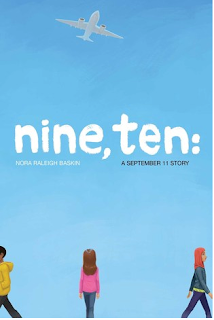Thanks to Teach Mentor Texts and Unleashing Readers for hosting this meme! I love all of the recommendations I collect from the "It's Monday! What Are you Reading?" posts!
I'm a huge fan of Wolfie the Bunny so it's no surprise that I enjoyed Horrible Bear! This book would be a perfect read aloud for primary students to discuss how we handle our frustrations. Great lesson!
I recently discovered this book, even though it was published in 2006. I love using Judith Viorst's books for the Again and Again (Notice and Note) signpost. Just in Case is the story of Charlie, an adorable boy who needs to be prepared for every possible situation.
Are We There Yet? will be such a fun classroom read aloud! Dan Santat's writing and illustrations are always captivating! Children will be able to relate to the boredom the character feels on a car trip to his grandmother's birthday party. The last line of this book could lead to a great classroom conversation!
I've seen many posts recommending Mother Bruce, so I had to get my hands on this book! In this adorable story, Bruce is clearly the victim of mistaken identity. There are many opportunities in this book to stop and ask students "What should Bruce do?". This book will become a favorite in our school library for sure! I'm looking forward to checking out Hotel Bruce in October!
Middle Grade Novels
Thank you to Elly Swartz for sharing Finding Perfect with me through NetGalley! Molly is a twelve year old girl struggling with OCD. A few of the ways she copes with the changes and struggles in her life are counting by four and carefully arranging the glass animals in her collection. In this book, Elly Swartz grabbed my heartstrings and hooked me with the ups and downs of Molly's journey to finding perfect. I can think of a number of students who would related to Molly's struggles. As a teacher, this book reminded me that in our classrooms we all have students who are struggling to be perfect, even if they are not dealing with the challenges of OCD. Molly's journey will remind readers that perfection is an elusive goal.
Five stars for this beautiful, touching story! I highly recommend that you get your hands on this book when it's released on October 18th!
I loved the perspectives of the four characters in this book. I will be highly recommending Nine, Ten as a read aloud to the fourth and fifth grade teachers in our upper elementary school! I know this book will inspire deep conversations with students about an important date in our country's history.
Tamra Wight's mysteries never disappoint me! Mystery of the Missing Fox is the story of Cooper, Packrat, Roy and Summer's quest to discover who is trying to harm the fox family at the Wilder Family Campground. As always, Tamra's character development is outstanding! I am hopeful that our upper elementary school will participate in a school-wide reading event with the books in this series this year!
Professional Reading
The tools in DIY literacy are ones I plan to use this year with teachers, especially in grades three to five. My goal is to create a demonstration notebook to collect some of my mini lessons from classrooms. I also hope to create some sample micro progressions for reading and writing workshop with teachers in the fall. The ideas in this professional book will impact student learning and engagement!
Up Next!
Thank you to my friend, Melissa Guerrette, for the advance reader copy of this book! It's next in my stack! I saw that Lynda Mullaly Hunt recommended it on Facebook!
I think this book will have great read aloud potential in the upper grades!
I am hoping to finish Visible Learning for Literacy before my summer institute on Wednesday!
























































